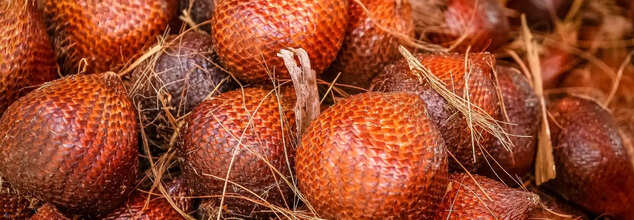- Health Conditions A-Z
- Health & Wellness
- Nutrition
- Fitness
- Health News
- Ayurveda
- Videos
- Medicine A-Z
- Parenting
- Web Stories
White Pumpkin Juice-What Are Its Health Benefits And How To Make It?

Credit: Canva
White pumpkin or Ash Guard is a considerably rare vegetable which is packed with nutrients. It is rich in Vitamins A, B6, C, E and other important minerals. This makes it a perfect pick for those battling high cholesterol and heart issues. Research proves that it also acts as an antidepressant, promotes eye health, and is beneficial for people with asthma. They also help treat peptic ulcers, reduce inflammation, and have anti-ageing effects. All the aforementioned benefits are carried to its juice as well.
Here's What Is Special About Ash Guard Juice?
1. Rich in Nutrients
White pumpkin juice is a powerhouse of essential nutrients, including vitamins A and C, potassium, and iron. Vitamin A is crucial for maintaining healthy vision and supporting immune function, while vitamin C acts as a potent antioxidant, aiding in tissue repair and enhancing the immune system. Potassium helps regulate blood pressure and supports heart health, and iron is vital for oxygen transport in the blood. Incorporating white pumpkin juice into your diet can contribute to overall well-being by providing these essential nutrients. citeturn0search0
2. Powerful Antioxidants
White pumpkin juice is rich in beta-carotene, a powerful antioxidant that combats free radicals in the body. Free radicals can cause oxidative stress, leading to cellular damage and contributing to chronic diseases. By neutralising these harmful molecules, beta-carotene helps protect cells, supports overall health, and may reduce the risk of certain diseases. citeturn0search0
4. Radiant Skin
Packed with vitamins and antioxidants, white pumpkin juice promotes healthy and glowing skin. The nutrients help combat skin damage caused by environmental factors, reduce signs of ageing like wrinkles and fine lines, and improve overall skin texture and appearance. Regular intake can lead to a more youthful and radiant complexion. citeturn0search0
5. Boosts the Immune System
Rich in vitamin A, white pumpkin juice supports the immune system by enhancing the body's defense mechanisms against infections. Vitamin A also plays a role in maintaining healthy mucous membranes and skin, which serve as barriers to pathogens. Additionally, it supports vision and helps prevent eye diseases, including night blindness and age-related conditions. citeturn0search0
6. Organic Energy Enhancement
White pumpkin juice serves as a natural energy booster without the drawbacks of caffeine. Its nutrient-rich profile provides sustained energy levels throughout the day, making it an excellent choice for those seeking a refreshing and nutritious beverage to combat fatigue and enhance overall vitality. citeturn0search0
7. Reduces Inflammation
The anti-inflammatory properties of white pumpkin juice help in reducing inflammation in the body. Chronic inflammation is linked to various health issues, including arthritis and heart disease. By incorporating this juice into your diet, you may help alleviate inflammation-related symptoms and promote overall health.
How To Prepare A Refreshing Ash Guard Juice At Home?
To make white pumpkin juice, start by peeling and deseeding a fresh white pumpkin. Cut it into small cubes and rinse them thoroughly. Add the cubes to a blender with a little water to ease blending. Blend until smooth, then strain the mixture using a fine sieve or muslin cloth to remove pulp. For enhanced taste, you can add a pinch of black salt, a squeeze of lemon juice, or a few mint leaves before blending. Serve the juice chilled. It’s best consumed fresh to retain maximum nutrients and flavour. Avoid adding sugar to keep it healthy and natural.
You Consume A Pound Of Insects Every Year—List Of Foods That Secretly Contain Bugs

Credit: Canva
The thought of eating insects could even make non-vegetarians squirm, let alone vegetarians. But there a plenty of everyday food items that secretly contain insects. Discussion on the issue began after a report recently revealed that cockroaches were being added to chocolate bars. However, the claim was very quickly debunked.
However, a similar report published in Scientific American claimed that a person consumes an average of one to two pounds of flies, maggots, and other bugs each year without even knowing it. Every day, food items like peanut butter, frozen vegetables and spices like cinnamon can contain a certain amount of bugs.
What Should You Know About Insects In Your Food
Peanut ButterThe peanut butter jar in your pantry can legally contain up to 136 insect parts, according to the FDA’s Food Defect Action Levels guide. From the field to your grocery store, insect fragments often make their way into food production.
Chocolate
The FDA permits up to 74 insect fragments in a 4.4-ounce chocolate bar. Cockroach parts are among the most common contaminants, adding nearly 6,000 bug pieces annually to a chocolate lover’s diet.
Pasta
One gram of pasta can contain a bug fragment, with up to 225 insect parts allowed in a 225-gram portion. These fragments usually come from wheat, which itself may hold up to 75 parts per 50 grams.
Coffee Beans
Your coffee may contain around 120 insect parts per cup. The FDA approves coffee with less than 10 per cent insect infestation, translating to nearly 140,000 bug fragments consumed annually.
Raisins
A single cup of raisins might have up to 35 fruit fly eggs and ten insects. The FDA ensures such small amounts are safe to consume, as eliminating all defects would make food production costly.
Mushrooms
Canned mushrooms with up to 19 maggots and 74 mites are considered FDA-approved. While unappealing, these fragments are often too small to notice and provide protein comparable to chicken or salmon.
Frozen Broccoli
Frozen broccoli can include up to 60 aphids per 100 grams. Regular consumption might lead to unintentionally eating over 1,600 aphids a year, as these tiny bugs commonly infest crop fields.
Canned Tomatoes
A 14.5-ounce can of tomatoes can legally contain eight fly eggs or one maggot. Interestingly, insect eggs are a delicacy in some cultures, like Mexican caviar, made from aquatic insect eggs.
Fruit Juice
The FDA allows canned fruit juices to have one maggot per 250 millilitres. Despite this, insects are a natural part of food processing, so your morning OJ likely contains a harmless amount.
Ground Pepper
Ground pepper can legally hold up to 475 bug fragments per 50 grams. Those insect heads and legs may be adding more spice to your meals than you realise.
Cinnamon
Up to 400 insect fragments are allowed per 50 grams of cinnamon. While this may not deter you from using the spice, it’s worth noting that your favourite desserts might not be entirely vegetarian.
Sauerkraut
Sauerkraut can contain up to 50 thrips, small stick-like insects. Knowing this might make you reconsider your next serving of this condiment.
Berries
Raspberries and blueberries can legally include up to four larvae or ten insects per 500 grams. These critters often end up unnoticed in canned or frozen berries.
Snake Fruit Is Nutrition Powerhouse-Here's Why You Should Add To Your Diet

Credit: Canva
Salak, commonly known as snake fruit, is a tropical fruit native to Indonesia that has gradually made its way to various parts of the world, including India. These trees are grown for their clustered fruit found at the base of the tree. Snake fruit has a scaly, red exterior and therefore received its name: snake fruit. The fruit is about the size of a fig and, once peeled, it looks like a large garlic clove. Beneath the snake-looking skin are three lobes of yellow or white pulp with flat skin inside them. With its distinctive reddish-brown scaly skin and a tangy, mildly sweet taste, this fruit is not just a treat for the taste buds but also a powerhouse of nutrients.
Here Is Why You Should Consider Adding Snake Fruit To Your Diet
1. Low Carbohydrate Content
If you are monitoring your carbohydrate intake, snake fruit is an excellent choice. It contains approximately 15 grams of carbohydrates per 100 grams, making it a lower-carb option compared to popular fruits like grapes and bananas. This makes it suitable for those looking to manage their blood sugar levels or maintain a low-carb diet.
2. High in Dietary Fibre
Snake fruit is a rich source of dietary fibre, which is essential for digestive health. Fibre adds bulk to the stool, promoting regular bowel movements and preventing constipation. Additionally, consuming fibre-rich foods like snake fruit can help you feel fuller for longer, potentially reducing overall calorie intake and aiding in weight management.
3. Packed with Essential Vitamins
This nutrient-dense fruit is loaded with essential vitamins and minerals. It is particularly high in vitamin C, a powerful antioxidant that boosts immunity and promotes healthy skin. Additionally, snake fruit contains potassium, which helps regulate blood pressure, and iron, which supports healthy blood circulation and prevents anaemia.
4. Moderate Natural Sugar Content
While snake fruit is naturally sweet, it contains a moderate amount of sugar compared to other high-sugar fruits. This makes it a suitable option for those watching their sugar intake, including individuals with diabetes. However, it is still advisable to consume it in moderation.
5. High Water Content for Hydration
One of the lesser-known benefits of snake fruit is its high water content. Foods with a high water content typically have a low-calorie density, meaning they can help you feel full without consuming too many calories. This makes snake fruit a hydrating and satisfying snack, particularly beneficial during hot weather.
Snake fruit is more than just an exotic fruit with a unique appearance. It is a nutritious addition to the diet, offering low carbs, high fibre, essential vitamins, and moderate natural sugars. Whether you enjoy it as a snack or incorporate it into salads and desserts, snake fruit can be a refreshing and health-boosting choice.
Why Should You Incorporate Ice Apple In Your Diet This Summer?

Credit: Canva
As the scorching sun takes over the skies, people are trying every remedy to keep themselves cool and refreshed. Many are turning to natural fruits and vegetables to beat the summer heat. One such fruit is the ice apple or Tadgoda. This lesser-known tropical fruit of the palmyra palm tree is perfect to beat the summer heat. Ice apples have a brown ice which needs to be peeled to extract their translucent and sweet pulp. Ice apple looks similar to litchi fruit and tastes slightly sweeter. They are a low-calorie fruit and are rich in calcium and phytonutrients, apart from sodium and potassium. Tadgola or ice apple helps cool the body, maintains electrolyte balance and works as a remedy for stomach ailments.
As the temperature soars, staying cool and hydrated becomes essential, and one fruit that stands out for its natural cooling properties is the ice apple. With its translucent, jelly-like texture and refreshing taste, ice apple is a seasonal fruit that not only quenches thirst but also offers a range of health benefits.
Natural Hydration And Cooling Effect
Ice apple is composed of approximately 95 per cent water, making it a natural coolant that effectively replenishes fluids lost through sweating during the hot summer months. Its rich mineral content, including potassium and magnesium, helps maintain the body’s electrolyte balance, preventing fatigue and promoting overall well-being.
Nutritional Powerhouse
This low-calorie fruit is packed with dietary fibre, aiding digestion and preventing constipation, a common issue exacerbated by heat. Additionally, ice apple is a source of essential vitamins such as vitamin C and B-complex, which strengthen the immune system and boost energy levels. Its low fat and calorie content make it an ideal choice for those looking to shed extra pounds without compromising on nutrition.
Refreshing Taste and Texture
The subtle sweetness and juicy, melt-in-the-mouth texture of ice apple make it a delightful summer treat. Whether consumed as is or chilled, it provides an instant cooling sensation that is particularly satisfying on a hot day. It is a favorite among both children and adults due to its light, refreshing flavour.
Gut-Friendly Benefits
Rich in fibre and natural sugars, ice apple acts as a gentle laxative, promoting regular bowel movements and preventing constipation. Its high water content further aids in digestion and helps prevent dehydration, making it a digestive-friendly fruit for the summer season.
Ayurvedic Perspective
In Ayurveda, ice apple is known for its ability to pacify Pitta dosha, which is associated with excess body heat. Consuming ice apple can help alleviate ailments like acidity, skin rashes, and heat stroke by naturally cooling the body and promoting a sense of calm and relaxation.
As summer continues to intensify, incorporating ice apple into your diet can be a refreshing and healthful way to stay cool while benefiting from its nutrient-rich profile. Whether enjoyed as a snack, dessert, or in a chilled beverage, this seasonal fruit is a must-try for beating the heat naturally.
© 2024 Bennett, Coleman & Company Limited



